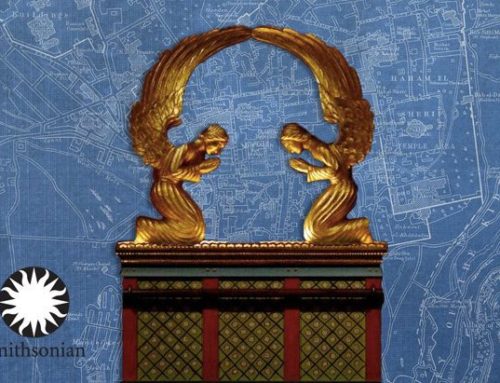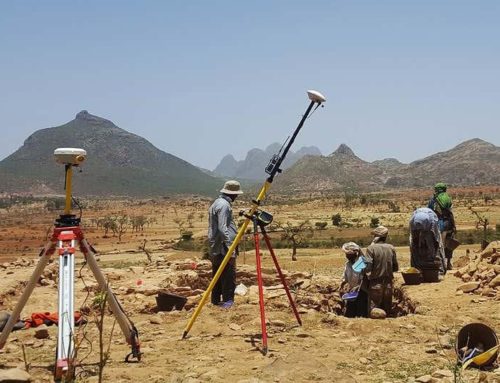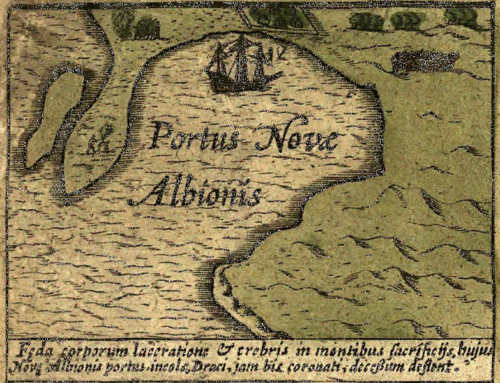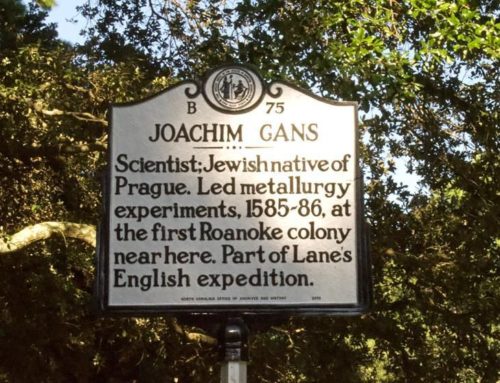 Discovering the grandeur of the monument built 3,400 years ago
Discovering the grandeur of the monument built 3,400 years ago
“Heya hup!” Deep in a muddy pit, a dozen workers wrestle with Egypt’s fearsome lion goddess, struggling to raise her into the sunlight for the first time in more than 3,000 years. She is Sekhmet—”the one who is powerful”—the embodiment of the fiery eye of the sun god Ra, but now she is caked in dirt and bound by thick rope. As the workers heave her out of the pit and onto a wooden track, the sand shifts and the six-foot-tall granite statue threatens to topple. A half-dozen men in ankle-length robes grab the taut ropes, again shout the Arabic equivalent of “heave, ho!” and steady her just in time.
Within the hour, the seated Sekhmet is once again imperious: her breath creates the desert wind, her anger feeds on disease and war, and her power protects mighty pharaohs. Or did. This long-buried statue is one of 730—one for every day and night of the year—that guarded a vast collection of gates, colonnades, courts and halls built by the great Egyptian king Amenhotep III, who reigned over Egypt for 38 years in the 14th century B.C., at the height of peace and prosperity. In its day, “The House of Millions of Years” was the largest and most impressive temple complex in the world. But it was no match for earthquakes, fires, floods or Amenhotep III’s successors, who scavenged stone blocks and statues for their own temples. Much of the site, near the Valley of the Kings along the west bank of the Nile River, is covered with sugar cane.
Hourig Sourouzian, an Armenian archaeologist, is directing the effort to rescue the long-neglected site and its many statues. “They didn’t deserve this treatment!” she says as a worker hoses off the mud and salt coating a Sekhmet lined up with a dozen similar statues in the bright sun.
Egyptologists had long assumed that all that remained of the temple complex were the imposing Colossi of Memnon, two seated statues of Amenhotep III at the entrance to his temple, and some stones and fragments of statuary. Sourouzian had been working at a neighboring temple, Merentptah, from which she would visit the Amenhotep complex. “I was always interested in the fragmented statuary of the site and dreamed about seeing them reconstructed instead of lying in vegetation, water and junk,” she recalls. Then, in 1996, a brush fire swept over the area, charring the stones and fragments and making them more vulnerable to cracking and erosion. When Sourouzian and her husband, German archaeologist Rainier Stadelmann, surveyed the damage, she says, “It was terrible and depressing, and we swore to take action.”
First, she convinced the World Monuments Fund in 1998 to designate the temple one of the world’s “100 Most Endangered Sites” and fund the initial conservation area of the shattered fragments aboveground. During the course of that effort, Sourouzian began to suspect that there was more to be found underground. By 2000, however, the money had run out, and she and Stadelmann reluctantly began to wrap up their work. But a wealthy French woman who had attended a lecture by Sourouzian in Paris agreed to fund a more ambitious excavation. Within a year, the team began to uncover their first statues, and the archaeologists realized that many treasures still lay beneath the dirt.
Born in Baghdad to parents of Armenian descent, Sourouzian grew up in Beirut and studied art history at the Sorbonne in Paris. Sent to Karnak by the Louvre, she became one of the leading authorities on Egyptian royal statuary. “She’s probably the best Egyptian art historian of our time,” says Betsy Bryan, an Egyptologist at Johns Hopkins University. Now, along with Stadelmann, who once headed the German Archaeological Institute in Cairo, Sourouzian orchestrates a team of two dozen specialists from around the world—including French, Swiss, German, Spanish and Japanese researchers—and as many as 400 local workers.
What began modestly has become one of the most ambitious projects Egypt has seen in decades, bringing to light a triumph of engineering and art that once dwarfed even the massive Karnak and Luxor temples across the Nile. Amenhotep III called the complex “a fortress of eternity out of good white sandstone—worked with gold throughout. Its floors were purified with silver, all of its doorways were of electrum,” an alloy of gold and silver.
The recently liberated Sekhmet statue is one of 72 of the goddess that Sourouzian and her team have discovered. They’ve also found two huge statues of Amenhotep III, each flanked by a smaller one of Queen Tye and a menagerie of sacred animals, including an alabaster hippopotamus. The project is giving Egyptologists a fresh look at the mysterious temple culture that dominated ancient life here, in which hordes of priests conducted rituals, made offerings and administered the intricate rites designed to ensure the eternal well-being of the dead pharaoh.
Once brightly painted in blues, reds, greens, yellows and whites, the 50-foot colossi in front of the massive first gate, or pylon, loomed over the Nile Valley’s flat farmland, facing the brown river that then flowed just a few hundred yards away. While the rest of the complex collapsed and crumbled, the stately statues remained. Cracks caused by an earthquake in 27 B.C. made one of the statues produce an odd tone when the morning sun struck it. A contemporary named Pausanias described the sound in his Guide to Greece as “very like the twang of a broken lyre-string or a broken harp-string.” The site quickly became one of the ancient world’s biggest tourist attractions; even the Roman emperor Hadrian came to hear it in A.D. 130. Alas, it was inadvertently silenced during restoration work in A.D. 199.
On a hot morning, visiting American archaeologists and art conservators spill out of a crowded van. Sourouzian leads them into a storeroom the length of a railroad car, and the visitors marvel at the Sekhmets, a giant head of the pharaoh, and bits and pieces of unidentified faces in neat rows—fresh finds from Sourouzian’s team. “She’s Isis reassembling Osiris,” says the University of Chicago archaeologist Ray Johnson, of Sourouzian, likening her to the goddess who recovers dismembered pieces of her lover and restores him to life.
Few building sprees in history can match that of Amenhotep III, and few pharaohs’ lives are so well documented—even his birth is commemorated in stone reliefs at Luxor. He came to the throne before his teens, at the death of his warrior father Thutmose IV. His grandfather and father had expelled Mesopotamian invaders known as the Mitanni. The young pharaoh quelled an uprising in Nubia at the southern fringe of his empire—chopping off the right hands of 312 enemies—but turned to diplomacy for the rest of his reign.
His principal wife, Tye, was from a noble Egyptian family, but Amenhotep III’s harem grew to include princesses from great powers such as Babylon and Mitanni—a common method of cementing alliances in the ancient world, but unusual for Egypt, whose rulers tended to disdain foreigners. He also maintained regular correspondence with other kings. Letters written in Mesopotamian cuneiform found at Amarna, the capital built by his son Akhenaten, reveal a canny leader who preferred words to weapons.
The peace that Amenhotep III worked hard to preserve brought a boom in international trade, with partners from throughout the Mediterranean, across Western Asia and deep into Africa—thanks in part to Egypt’s many gold mines. “Gold in your country is dirt; one simply gathers it up,” wrote an obviously envious Assyrian king. The pharaoh used his wealth to transform the nation into an imperial showplace. He ordered temples built from the Nile Delta in the north to Nubia 800 miles to the south. Under his patronage, artists experimented with new styles of sculpture and reliefs carved into temple walls. Traditional rudimentary forms became elegant and sophisticated, and the carvings reveal more attention to craft and detail. It was “probably the highest-quality art Egypt ever made,” says Johns Hopkins’ Betsy Bryan. “The man had taste!”
Amenhotep III reserved the greatest works for his hometown, Thebes, today’s Luxor. During most of the so-called New Kingdom, which lasted from 1570 B.C. to 1070 B.C., pharaohs resided at Memphis, a cosmopolitan city near today’s Cairo. But as Amenhotep III grew older, he spent more and more time in Thebes, turning it into one vast religious center spanning both sides of the Nile. Large additions were made to the Karnak and Luxor temples on the Nile’s east bank, both of which had begun as small Middle Kingdom sanctuaries. Across the river, Amenhotep III built a huge harbor and an adjacent palace with colorfully painted walls, as well as his extensive funerary temple.
It was this great temple, rather than his hidden tomb in the Valley of the Kings, that Amenhotep III counted on to ensure his soul’s journey to the afterlife—and, no doubt, inspire awe among the living. Stretching seven football fields in length from the colossi at the main entrance, which faced east to the Nile, to sacred altars pointing toward the Valley of the Kings in the west, the complex covered an area nearly the size of Vatican City. In its day, it was the largest and one of the most ornate religious structures in the world, filled with hundreds of statues, stone reliefs and inscriptions set among colonnaded plazas. Colorful royal banners flapped from cedar poles shimmering in gold leaf and secured on red granite pedestals at pylons, or massive gateways, that led into innumerable sanctuaries.
Such an awesome sight is hard to envision today. In addition to an earthquake a century or so after Amenhotep III’s death that toppled its columns and walls, successive pharaohs raided it for their own temples. Ramses II took two seated colossi in the 13th century B.C., and the site was still being scavenged a thousand years later. The earthquake in 27 B.C. toppled much of what remained. Nineteenth-century treasure hunters carted off what they could find from the rubble—sphinxes to embellish the Neva River embankment in St. Petersburg, royal statues to London’s British Museum and a head of the pharaoh to the Louvre in Paris. Excavations from the 1950s through the 1970s revealed little more than scattered stone fragments and artifacts.
Today’s most insidious threat is the slow rising of groundwater. In the past, the Nile flooded annually, replenishing fields along the river before retreating to within its banks. (Some scholars, though not Sourouzian, believe Amenhotep III’s temple was designed to allow the holy Nile floodwaters to wash through the gates and plazas.) Since the Aswan High Dam was completed in 1970, the Nile waters no longer surge over its banks (and the river is two miles from the temple site), but sugar cane farmers irrigate year-round, turning the desert into soggy soil. The water carries salts that eat away at stone, particularly more porous varieties such as limestone and sandstone.
On a spring morning, the huge field, bordered by sugar cane and the road to the Valley of the Kings, resembles a busy construction site. At the spot where a pylon once stood behind the Colossi of Memnon, researchers sit under tarps, patiently sorting and photographing fragments from one of two smaller colossi that fell in antiquity. The head of one of them alone weighs 25 tons, and nearly 200 workers and a winch were required to pull the broken statue out of the mud. Sourouzian hopes to re-erect those statues—each torso weighs 450 tons—once the ground dries and a secure foundation can be built.
Nearby, an alabaster statue of a crocodile and two more statues of Amenhotep III, also in alabaster, wait to be cleaned. Remains of massive sandstone columns are in rows of three and four. The columns formed the edges of the great peristyle hall, or sun court, and once stood on crude blocks and gravel. “Obviously, they were cutting corners here and there,” says Theodore Gayer-Anderson, a British archaeologist on the team. “They weren’t the ideal builders.” The stubs of the columns are fragile, and to coax out salt, which is corrosive, Gayer-Anderson coats them in a poultice of deionized water, cellulose powder and mineral powder. Each wrapping must be changed every two days. “It’s impossible to eliminate the salt,” he says. “But you can cleanse the skin to a stable level.”
A few yards away, a seven-ton torso of Amenhotep III dangles below an iron tepee, as workers prepare to marry it to a base covered in protective scaffolding. The statue’s head was found a century ago and is now in the British Museum. The museum has promised to send a cast of the head to be placed on the torso next spring. An Egyptian foreman barks at the workers as the torso is raised into place, while a Spanish archaeologist paces across some beams. “I’m not nervous—that wouldn’t help,” he announces.
This is the first of five 25-foot-high statues of Amenhotep III that the team intends to re-erect. The statues once stood between the columns. On the north side of the peristyle hall, the statues are made from quartzite from near today’s Cairo and they wear the chair-shaped crown of lower Egypt (that is, northern Egypt, which lies downstream along the Nile). On the south side, the images are made from Aswan’s red granite and wear the white conical headpiece of upper Egypt. In addition to the statues of the pharaoh, which were in fragments, an alabaster hippopotamus surfaced, minus head and tail, along with six standing statues of Sekhmet, beautifully preserved, each holding a papyrus bundle in one hand and an ankh—the symbol of life—in the other.
The excavation is only in its initial phases and could take two decades or more. To the west of the peristyle hall was a hypostyle hall, a vast interior space that once had a roof supported by massive columns. It no doubt holds more statues and artifacts. “You would need years and millions of dollars to excavate,” says Sourouzian, looking with a touch of longing over the bare ground. “What’s more urgent is to save the statues, preserve the last remains of the temple and present it with dignity.”
Andrew Lawler has written about Alexandria, Petra and a newfound tomb in the Valley of the Kings for Smithsonian.




